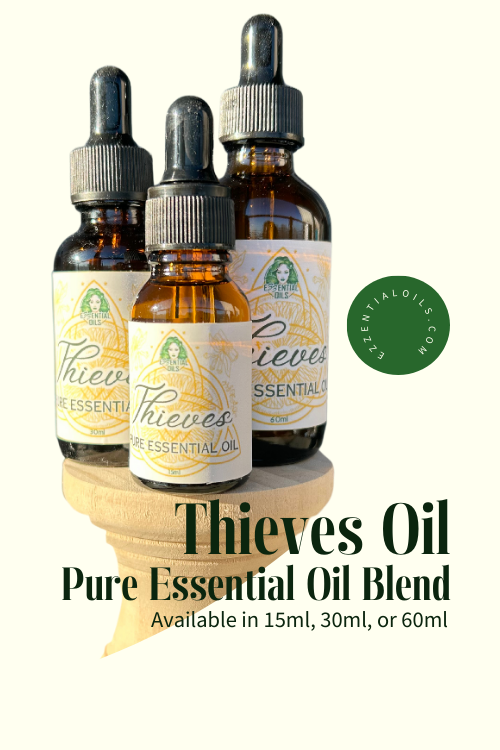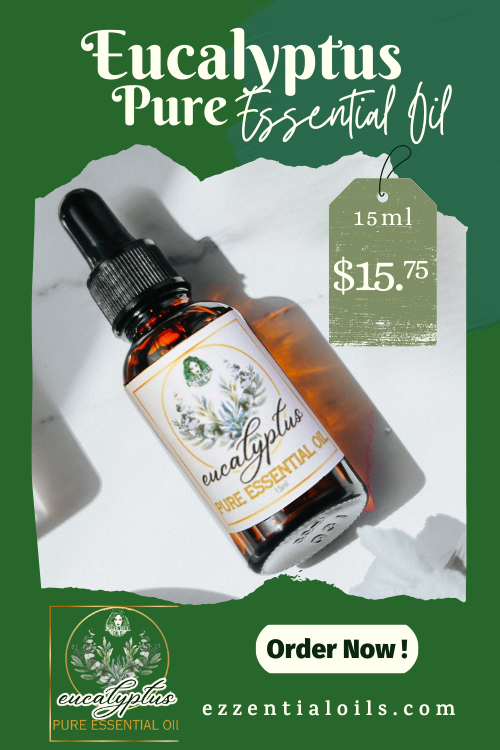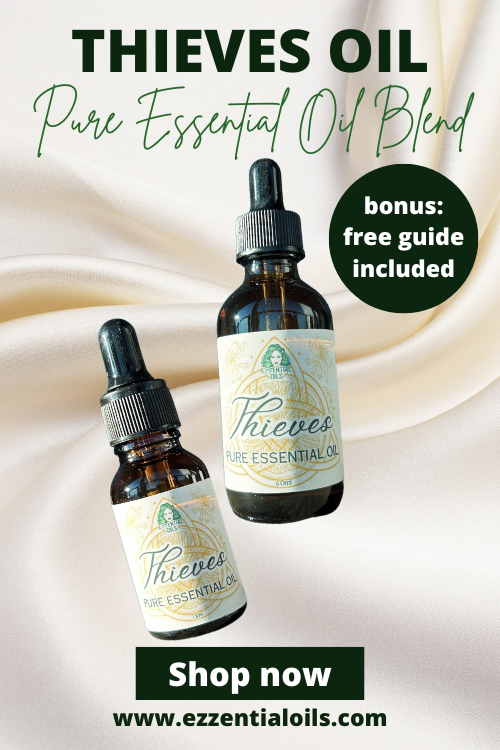Practice Focus:
Essential Oils For Calming The Body And Mind
Calmness serves as the foundation for balance and mindfulness, both in yoga practice and daily life. In the fast-paced world we live in, achieving a state of relaxation is essential for mental clarity, emotional stability, and physical well-being. Yoga, with its emphasis on breath, movement, and mindfulness, is a powerful tool for cultivating calmness. When combined with practices like aromatherapy, it becomes even more effective in creating a sanctuary for the mind and body. Whether on the mat or off, cultivating calmness helps us respond to life's challenges with resilience and grace.
Essential oils play a vital role in fostering relaxation and relieving stress, making them invaluable allies in yoga practice. These natural plant extracts influence the body and mind through their powerful aromatic compounds, helping to soothe frazzled nerves and restore a sense of inner peace. By stimulating the olfactory system, essential oils can directly impact the limbic system—the part of the brain that governs emotions and memories. This connection is why certain scents, like lavender or bergamot, can almost instantly promote feelings of tranquility and comfort, making aromatherapy a potent tool for calming both the body and mind.
The synergy between aromatherapy and yoga lies in their shared ability to support the nervous system and encourage a meditative state. While yoga encourages deep breathing and mindfulness to activate the parasympathetic nervous system, essential oils amplify these effects by creating a soothing sensory experience. Together, they enhance our ability to focus inward, release tension, and embrace the present moment. Whether diffused during meditation or applied before Savasana, essential oils provide a natural way to deepen your connection to calmness and balance.
The Science of Calm with Essential Oils
Essential oils have a unique ability to influence our mood and stress levels through their interaction with the limbic system, the brain's emotional center. When inhaled, aromatic molecules travel through the olfactory system to the limbic system, which governs emotions, memory, and behavior. This direct connection explains why certain scents, like lavender or chamomile, can immediately evoke feelings of relaxation and comfort. By targeting this part of the brain, essential oils effectively help regulate stress responses and promote emotional balance.
Calming essential oils also produce measurable physiological effects on the body. Many oils, such as bergamot and marjoram, have been shown to lower cortisol levels—the hormone associated with stress. Others, like frankincense and amyris, slow the heart rate and encourage deeper, more rhythmic breathing. These effects work together to activate the parasympathetic nervous system, also known as the "rest and digest" state, allowing the body to relax and recover from daily stressors.
Grounding aromas, such as myrrh or vetiver, play a crucial role in fostering emotional stability and mental clarity. These oils provide a sense of rootedness and calm, especially during times of uncertainty or overwhelm. Their earthy, resinous scents help anchor the mind, making it easier to let go of distractions and focus inward. This grounding effect is particularly beneficial in yoga and meditation, where a stable emotional state supports deeper introspection and mindfulness.
Incorporating calming and grounding essential oils into daily routines or yoga practices enhances overall well-being. Whether diffused during relaxation, applied topically, or used in a personal aromatherapy ritual, these oils provide a natural and effective way to cultivate peace and resilience. By understanding the science behind their calming properties, we can harness their full potential to nurture both body and mind.
Top Essential Oils for Calming the Body and Mind
Lavender
Lavender is the ultimate calming oil, cherished for its versatility and effectiveness. It helps reduce stress, ease headaches, and promote restful sleep. Its floral aroma provides immediate comfort and relaxation. In yoga, lavender enhances Savasana and restorative poses, fostering a serene and tranquil environment. Its ability to soothe both the body and mind makes it an essential oil staple for yoga practitioners seeking to deepen their relaxation.
Amyris
Amyris is grounding and tranquil, often used as a base note in calming blends. Its soft, woody aroma supports mindfulness and inner stillness, making it a favorite for meditation and nighttime use. During yoga practice, Amyris helps to anchor the mind, encouraging focus and presence in meditative and slow-flow sequences. Its grounding qualities are particularly beneficial for connecting with the earth in grounding poses like Tadasana (Mountain Pose) or Balasana (Child's Pose).
Sweet Orange
With its cheerful and bright scent, sweet orange is both calming and uplifting. It's perfect for relieving nervous tension while fostering a positive and relaxed state of mind. In yoga, sweet orange oil can create a welcoming and joyful atmosphere, making it ideal for morning practices or classes focused on heart-opening poses. Its ability to uplift while soothing tension makes it a versatile addition to yoga sessions, enhancing overall well-being.
Palmarosa
Palmarosa offers a gentle, floral aroma that soothes anxiety and encourages emotional balance. Its hydrating properties also make it an excellent choice for calming skincare routines. For yoga, palmarosa oil supports emotional release during heart-centered practices and restorative flows. Its calming energy complements poses that focus on opening the chest and balancing the heart chakra, such as Anahatasana (Melting Heart Pose).
Marjoram
Marjoram's warm and herbaceous scent is deeply calming, particularly for physical tension. It's ideal for massages to relieve sore muscles and quiet the mind after a long day. In yoga, marjoram oil can be used in post-practice rituals or applied topically to enhance muscle recovery after vigorous flows or power yoga sessions. Its soothing properties encourage relaxation and ease, making it a perfect companion for winding down.
German Chamomile
This oil is a powerhouse for calming both mind and body. Its sweet, apple-like aroma is perfect for alleviating anxiety, soothing irritated skin, and promoting deep relaxation. German chamomile is particularly effective in yoga nidra or yin yoga, where deep relaxation is the goal. Its calming properties align with the restorative intentions of these practices, supporting profound rest and rejuvenation.
Spearmint
Gentler than peppermint, spearmint has a fresh, sweet aroma that calms without overstimulating. It's an excellent choice for those who need clarity and relaxation during stressful moments. In yoga, spearmint oil can invigorate the senses while maintaining a calm focus, making it suitable for pranayama practices or classes centered on mindfulness and balance. Its refreshing scent encourages deep, intentional breathing.
Myrrh
Myrrh's resinous and earthy scent is grounding and reflective, making it a powerful ally for reducing emotional stress and enhancing spiritual practices. During yoga, myrrh oil can deepen meditation and spiritual connection, particularly in practices involving chanting or prayer. Its grounding qualities make it ideal for poses like Sukhasana (Easy Pose) and Vrksasana (Tree Pose), where stability and inner reflection are key.
Eucalyptus Globulus
Though invigorating, eucalyptus globulus has a cooling and calming effect that eases tension and promotes clear breathing, creating a sense of tranquility in both body and mind. In yoga, eucalyptus oil supports practices focused on breathwork and respiratory health, such as pranayama or vinyasa flows. Its ability to open airways and calm the mind makes it a versatile choice for enhancing physical and mental clarity during practice.
Bergamot
Bergamot's citrusy and floral aroma is a natural mood balancer. It's especially effective in reducing feelings of anxiety and sadness while fostering a sense of calm confidence. In yoga, bergamot oil can create a harmonious environment for introspective practices or flows that prioritize emotional release. Its uplifting yet calming properties encourage a sense of optimism and peace, complementing heart-centered poses and meditation.
DIY Blends for Relaxation
Creating your own essential oil blends allows you to tailor the aromas to your personal preferences and specific relaxation needs. Below are a few easy-to-follow recipes to inspire your aromatherapy journey:
Soothing Blend for Evening Yoga or Meditation
This calming blend is perfect for unwinding after a long day, enhancing your evening yoga or meditation practice. Combine:
4 drops Lavender essential oil
3 drops Amyris essential oil
2 drops Sweet Orange essential oil
Diffuse this blend in your practice space or add it to a roller bottle with a carrier oil for gentle application to pulse points. Its floral and woody notes create a serene ambiance, helping you transition into relaxation and stillness.
Stress-Relief Blend for Mid-Day Mindfulness Breaks
For a quick reset during a busy day, try this stress-relief blend that promotes mental clarity and emotional balance. Mix:
3 drops Bergamot essential oil
2 drops Spearmint essential oil
2 drops Palmarosa essential oil
Use this blend in a personal inhaler or add it to a diffuser near your workspace. The bright, uplifting citrus notes combined with the grounding and minty aromas create a refreshing and calming effect, perfect for re-centering your focus.
Grounding Blend for Savasana and Post-Practice Relaxation
Enhance the restorative benefits of Savasana or post-practice relaxation with this grounding blend. Combine:
4 drops Frankincense essential oil
3 drops Myrrh essential oil
2 drops German Chamomile essential oil
Diffuse this blend in your yoga studio or mix it with a carrier oil for a soothing massage. The deep, resinous aromas paired with the sweet, calming notes of chamomile create a sense of stability and inner peace, grounding both the body and mind.
Tips for Harmonizing Aromas
When creating your own blends, aim to balance floral, citrus, and woody notes for a harmonious aroma. Floral oils, like lavender and palmarosa, provide a soothing base, while citrus oils, such as sweet orange and bergamot, add uplifting brightness. Woody and resinous oils, including frankincense and amyris, offer grounding and depth. Experiment with different ratios to discover your ideal blend, and always remember to dilute your creations properly for safe use.
Applications in Yoga Practice
Diffusion for Relaxation
Diffusing essential oils is a simple yet powerful way to create a serene atmosphere in your yoga practice space. By filling the room with calming aromas like lavender, frankincense, or sweet orange, you establish an environment conducive to mindfulness and relaxation. Diffusion is particularly effective for group yoga sessions, helping participants ease into a state of calm before practice begins. It sets the tone for a deeply restorative experience and encourages a sense of unity in shared spaces.
Topical Use
Applying diluted essential oils to pulse points or the soles of the feet before yoga enhances the sensory experience while delivering the calming properties of the oils directly to your body. For example, a blend of lavender and amyris in a carrier oil can be massaged onto the temples or wrists to promote tranquility. Applying oils to the soles of the feet allows for quick absorption while grounding your energy, an especially beneficial ritual before restorative or meditative practices.
Inhalation Techniques
Incorporating deep breathing exercises with essential oils amplifies the calming effects of pranayama. Placing a single drop of oil, such as bergamot or spearmint, on your palms, rubbing them together, and cupping your hands around your nose allows for a concentrated inhalation. This technique helps initiate calm and focus before practice or during moments of stress. It aligns breath awareness with the soothing properties of the oil, fostering a deeper connection between mind and body.
Yoga Nidra and Restorative Yoga
Calming essential oils play a transformative role in practices like Yoga Nidra and restorative yoga. These styles emphasize deep relaxation, and adding oils like German chamomile or myrrh can enhance the sense of stillness and release. Diffuse oils during the session or apply them to an eye pillow or blanket to create an immersive experience. This subtle integration of aromatherapy supports the body's natural relaxation response, making each pose or guided meditation even more effective in achieving complete rest and rejuvenation.
Integrating Aromatherapy into Daily Life
Integrating aromatherapy into daily life is a simple yet powerful way to cultivate calm and relaxation. Calming oils like lavender or marjoram can enhance evening rituals by being diffused in the bedroom or added to a warm bath, promoting restful sleep. During stressful moments, inhaling the soothing scent of bergamot or spearmint from a personal inhaler or a drop on a tissue can provide instant relaxation. Portable solutions like pre-diluted roller blends are excellent for on-the-go use, allowing you to apply calming oils to pulse points whenever you need a moment of peace amidst a busy day.
Precautions and Safety Tips
When using essential oils for calming and relaxation, proper dilution is key to avoiding skin sensitivity or irritation. Essential oils are highly concentrated and should always be mixed with a carrier oil, such as sweet almond or jojoba, before topical application. A typical dilution ratio for adults is 2-3% (about 6-9 drops of essential oil per ounce of carrier oil). For sensitive skin areas, lower concentrations are recommended. Always perform a patch test to ensure there's no adverse reaction before using new oils extensively.
Equally important is selecting high-quality, pure essential oils to ensure therapeutic benefits. Opt for oils that are 100% pure, free of synthetic additives, and sourced from reputable suppliers. Additionally, take extra care when using essential oils around children, pets, and pregnant individuals, as some oils may not be safe in these contexts. For example, oils like eucalyptus or peppermint should be avoided around young children due to potential respiratory sensitivities. Always consult with a qualified practitioner if in doubt and follow specific safety guidelines for these groups to maximize benefits without risks.
Calming essential oils are powerful tools for enhancing yoga practice and fostering overall well-being. Their ability to ease stress, promote relaxation, and support emotional balance makes them invaluable for creating a sense of peace both on and off the mat. By exploring different oils and incorporating them into your practice, you can tailor your aromatherapy experience to align with your unique needs and preferences.
Ready to deepen your journey into the transformative world of yoga and aromatherapy? Our Aroma Yoga course is the perfect next step. Learn how to seamlessly integrate essential oils into your yoga routines, enhance your practice, and create a more holistic wellness experience. Join us and discover how the synergy of movement, breath, and aromatherapy can elevate your mind, body, and spirit.
Please note, the International Federation of Aromatherapists do not recommend that Essential Oils be taken internally, unless under the supervision of a Medical Doctor, who is also qualified in clinical Aromatherapy. In addition, Essential Oils must be properly diluted before use, in order to avoid any damages to property or adverse physical effects (including injury or bodily harm).
This article is for information purposes only. All Ezzential Oils products are for external use only unless otherwise indicated. This information is not intended to diagnose, treat, cure, or prevent any disease, and it should not be used by anyone who is pregnant or under the care of a medical practitioner. Please refer to our policies for further details, and our disclaimer below.
Essential oils play a vital role in fostering relaxation and relieving stress, making them invaluable allies in yoga practice. These natural plant extracts influence the body and mind through their powerful aromatic compounds, helping to soothe frazzled nerves and restore a sense of inner peace. By stimulating the olfactory system, essential oils can directly impact the limbic system—the part of the brain that governs emotions and memories. This connection is why certain scents, like lavender or bergamot, can almost instantly promote feelings of tranquility and comfort, making aromatherapy a potent tool for calming both the body and mind.
The synergy between aromatherapy and yoga lies in their shared ability to support the nervous system and encourage a meditative state. While yoga encourages deep breathing and mindfulness to activate the parasympathetic nervous system, essential oils amplify these effects by creating a soothing sensory experience. Together, they enhance our ability to focus inward, release tension, and embrace the present moment. Whether diffused during meditation or applied before Savasana, essential oils provide a natural way to deepen your connection to calmness and balance.
The Science of Calm with Essential Oils
Essential oils have a unique ability to influence our mood and stress levels through their interaction with the limbic system, the brain's emotional center. When inhaled, aromatic molecules travel through the olfactory system to the limbic system, which governs emotions, memory, and behavior. This direct connection explains why certain scents, like lavender or chamomile, can immediately evoke feelings of relaxation and comfort. By targeting this part of the brain, essential oils effectively help regulate stress responses and promote emotional balance.
Calming essential oils also produce measurable physiological effects on the body. Many oils, such as bergamot and marjoram, have been shown to lower cortisol levels—the hormone associated with stress. Others, like frankincense and amyris, slow the heart rate and encourage deeper, more rhythmic breathing. These effects work together to activate the parasympathetic nervous system, also known as the "rest and digest" state, allowing the body to relax and recover from daily stressors.
Grounding aromas, such as myrrh or vetiver, play a crucial role in fostering emotional stability and mental clarity. These oils provide a sense of rootedness and calm, especially during times of uncertainty or overwhelm. Their earthy, resinous scents help anchor the mind, making it easier to let go of distractions and focus inward. This grounding effect is particularly beneficial in yoga and meditation, where a stable emotional state supports deeper introspection and mindfulness.
Incorporating calming and grounding essential oils into daily routines or yoga practices enhances overall well-being. Whether diffused during relaxation, applied topically, or used in a personal aromatherapy ritual, these oils provide a natural and effective way to cultivate peace and resilience. By understanding the science behind their calming properties, we can harness their full potential to nurture both body and mind.
Top Essential Oils for Calming the Body and Mind
Lavender
Lavender is the ultimate calming oil, cherished for its versatility and effectiveness. It helps reduce stress, ease headaches, and promote restful sleep. Its floral aroma provides immediate comfort and relaxation. In yoga, lavender enhances Savasana and restorative poses, fostering a serene and tranquil environment. Its ability to soothe both the body and mind makes it an essential oil staple for yoga practitioners seeking to deepen their relaxation.
Amyris
Amyris is grounding and tranquil, often used as a base note in calming blends. Its soft, woody aroma supports mindfulness and inner stillness, making it a favorite for meditation and nighttime use. During yoga practice, Amyris helps to anchor the mind, encouraging focus and presence in meditative and slow-flow sequences. Its grounding qualities are particularly beneficial for connecting with the earth in grounding poses like Tadasana (Mountain Pose) or Balasana (Child's Pose).
Sweet Orange
With its cheerful and bright scent, sweet orange is both calming and uplifting. It's perfect for relieving nervous tension while fostering a positive and relaxed state of mind. In yoga, sweet orange oil can create a welcoming and joyful atmosphere, making it ideal for morning practices or classes focused on heart-opening poses. Its ability to uplift while soothing tension makes it a versatile addition to yoga sessions, enhancing overall well-being.
Palmarosa
Palmarosa offers a gentle, floral aroma that soothes anxiety and encourages emotional balance. Its hydrating properties also make it an excellent choice for calming skincare routines. For yoga, palmarosa oil supports emotional release during heart-centered practices and restorative flows. Its calming energy complements poses that focus on opening the chest and balancing the heart chakra, such as Anahatasana (Melting Heart Pose).
Marjoram
Marjoram's warm and herbaceous scent is deeply calming, particularly for physical tension. It's ideal for massages to relieve sore muscles and quiet the mind after a long day. In yoga, marjoram oil can be used in post-practice rituals or applied topically to enhance muscle recovery after vigorous flows or power yoga sessions. Its soothing properties encourage relaxation and ease, making it a perfect companion for winding down.
German Chamomile
This oil is a powerhouse for calming both mind and body. Its sweet, apple-like aroma is perfect for alleviating anxiety, soothing irritated skin, and promoting deep relaxation. German chamomile is particularly effective in yoga nidra or yin yoga, where deep relaxation is the goal. Its calming properties align with the restorative intentions of these practices, supporting profound rest and rejuvenation.
Spearmint
Gentler than peppermint, spearmint has a fresh, sweet aroma that calms without overstimulating. It's an excellent choice for those who need clarity and relaxation during stressful moments. In yoga, spearmint oil can invigorate the senses while maintaining a calm focus, making it suitable for pranayama practices or classes centered on mindfulness and balance. Its refreshing scent encourages deep, intentional breathing.
Myrrh
Myrrh's resinous and earthy scent is grounding and reflective, making it a powerful ally for reducing emotional stress and enhancing spiritual practices. During yoga, myrrh oil can deepen meditation and spiritual connection, particularly in practices involving chanting or prayer. Its grounding qualities make it ideal for poses like Sukhasana (Easy Pose) and Vrksasana (Tree Pose), where stability and inner reflection are key.
Eucalyptus Globulus
Though invigorating, eucalyptus globulus has a cooling and calming effect that eases tension and promotes clear breathing, creating a sense of tranquility in both body and mind. In yoga, eucalyptus oil supports practices focused on breathwork and respiratory health, such as pranayama or vinyasa flows. Its ability to open airways and calm the mind makes it a versatile choice for enhancing physical and mental clarity during practice.
Bergamot
Bergamot's citrusy and floral aroma is a natural mood balancer. It's especially effective in reducing feelings of anxiety and sadness while fostering a sense of calm confidence. In yoga, bergamot oil can create a harmonious environment for introspective practices or flows that prioritize emotional release. Its uplifting yet calming properties encourage a sense of optimism and peace, complementing heart-centered poses and meditation.
DIY Blends for Relaxation
Creating your own essential oil blends allows you to tailor the aromas to your personal preferences and specific relaxation needs. Below are a few easy-to-follow recipes to inspire your aromatherapy journey:
Soothing Blend for Evening Yoga or Meditation
This calming blend is perfect for unwinding after a long day, enhancing your evening yoga or meditation practice. Combine:
4 drops Lavender essential oil
3 drops Amyris essential oil
2 drops Sweet Orange essential oil
Diffuse this blend in your practice space or add it to a roller bottle with a carrier oil for gentle application to pulse points. Its floral and woody notes create a serene ambiance, helping you transition into relaxation and stillness.
Stress-Relief Blend for Mid-Day Mindfulness Breaks
For a quick reset during a busy day, try this stress-relief blend that promotes mental clarity and emotional balance. Mix:
3 drops Bergamot essential oil
2 drops Spearmint essential oil
2 drops Palmarosa essential oil
Use this blend in a personal inhaler or add it to a diffuser near your workspace. The bright, uplifting citrus notes combined with the grounding and minty aromas create a refreshing and calming effect, perfect for re-centering your focus.
Grounding Blend for Savasana and Post-Practice Relaxation
Enhance the restorative benefits of Savasana or post-practice relaxation with this grounding blend. Combine:
4 drops Frankincense essential oil
3 drops Myrrh essential oil
2 drops German Chamomile essential oil
Diffuse this blend in your yoga studio or mix it with a carrier oil for a soothing massage. The deep, resinous aromas paired with the sweet, calming notes of chamomile create a sense of stability and inner peace, grounding both the body and mind.
Tips for Harmonizing Aromas
When creating your own blends, aim to balance floral, citrus, and woody notes for a harmonious aroma. Floral oils, like lavender and palmarosa, provide a soothing base, while citrus oils, such as sweet orange and bergamot, add uplifting brightness. Woody and resinous oils, including frankincense and amyris, offer grounding and depth. Experiment with different ratios to discover your ideal blend, and always remember to dilute your creations properly for safe use.
Applications in Yoga Practice
Diffusion for Relaxation
Diffusing essential oils is a simple yet powerful way to create a serene atmosphere in your yoga practice space. By filling the room with calming aromas like lavender, frankincense, or sweet orange, you establish an environment conducive to mindfulness and relaxation. Diffusion is particularly effective for group yoga sessions, helping participants ease into a state of calm before practice begins. It sets the tone for a deeply restorative experience and encourages a sense of unity in shared spaces.
Topical Use
Applying diluted essential oils to pulse points or the soles of the feet before yoga enhances the sensory experience while delivering the calming properties of the oils directly to your body. For example, a blend of lavender and amyris in a carrier oil can be massaged onto the temples or wrists to promote tranquility. Applying oils to the soles of the feet allows for quick absorption while grounding your energy, an especially beneficial ritual before restorative or meditative practices.
Inhalation Techniques
Incorporating deep breathing exercises with essential oils amplifies the calming effects of pranayama. Placing a single drop of oil, such as bergamot or spearmint, on your palms, rubbing them together, and cupping your hands around your nose allows for a concentrated inhalation. This technique helps initiate calm and focus before practice or during moments of stress. It aligns breath awareness with the soothing properties of the oil, fostering a deeper connection between mind and body.
Yoga Nidra and Restorative Yoga
Calming essential oils play a transformative role in practices like Yoga Nidra and restorative yoga. These styles emphasize deep relaxation, and adding oils like German chamomile or myrrh can enhance the sense of stillness and release. Diffuse oils during the session or apply them to an eye pillow or blanket to create an immersive experience. This subtle integration of aromatherapy supports the body's natural relaxation response, making each pose or guided meditation even more effective in achieving complete rest and rejuvenation.
Integrating Aromatherapy into Daily Life
Integrating aromatherapy into daily life is a simple yet powerful way to cultivate calm and relaxation. Calming oils like lavender or marjoram can enhance evening rituals by being diffused in the bedroom or added to a warm bath, promoting restful sleep. During stressful moments, inhaling the soothing scent of bergamot or spearmint from a personal inhaler or a drop on a tissue can provide instant relaxation. Portable solutions like pre-diluted roller blends are excellent for on-the-go use, allowing you to apply calming oils to pulse points whenever you need a moment of peace amidst a busy day.
Precautions and Safety Tips
When using essential oils for calming and relaxation, proper dilution is key to avoiding skin sensitivity or irritation. Essential oils are highly concentrated and should always be mixed with a carrier oil, such as sweet almond or jojoba, before topical application. A typical dilution ratio for adults is 2-3% (about 6-9 drops of essential oil per ounce of carrier oil). For sensitive skin areas, lower concentrations are recommended. Always perform a patch test to ensure there's no adverse reaction before using new oils extensively.
Equally important is selecting high-quality, pure essential oils to ensure therapeutic benefits. Opt for oils that are 100% pure, free of synthetic additives, and sourced from reputable suppliers. Additionally, take extra care when using essential oils around children, pets, and pregnant individuals, as some oils may not be safe in these contexts. For example, oils like eucalyptus or peppermint should be avoided around young children due to potential respiratory sensitivities. Always consult with a qualified practitioner if in doubt and follow specific safety guidelines for these groups to maximize benefits without risks.
Calming essential oils are powerful tools for enhancing yoga practice and fostering overall well-being. Their ability to ease stress, promote relaxation, and support emotional balance makes them invaluable for creating a sense of peace both on and off the mat. By exploring different oils and incorporating them into your practice, you can tailor your aromatherapy experience to align with your unique needs and preferences.
Ready to deepen your journey into the transformative world of yoga and aromatherapy? Our Aroma Yoga course is the perfect next step. Learn how to seamlessly integrate essential oils into your yoga routines, enhance your practice, and create a more holistic wellness experience. Join us and discover how the synergy of movement, breath, and aromatherapy can elevate your mind, body, and spirit.
Safety Information
Please note, the International Federation of Aromatherapists do not recommend that Essential Oils be taken internally, unless under the supervision of a Medical Doctor, who is also qualified in clinical Aromatherapy. In addition, Essential Oils must be properly diluted before use, in order to avoid any damages to property or adverse physical effects (including injury or bodily harm).
This article is for information purposes only. All Ezzential Oils products are for external use only unless otherwise indicated. This information is not intended to diagnose, treat, cure, or prevent any disease, and it should not be used by anyone who is pregnant or under the care of a medical practitioner. Please refer to our policies for further details, and our disclaimer below.













